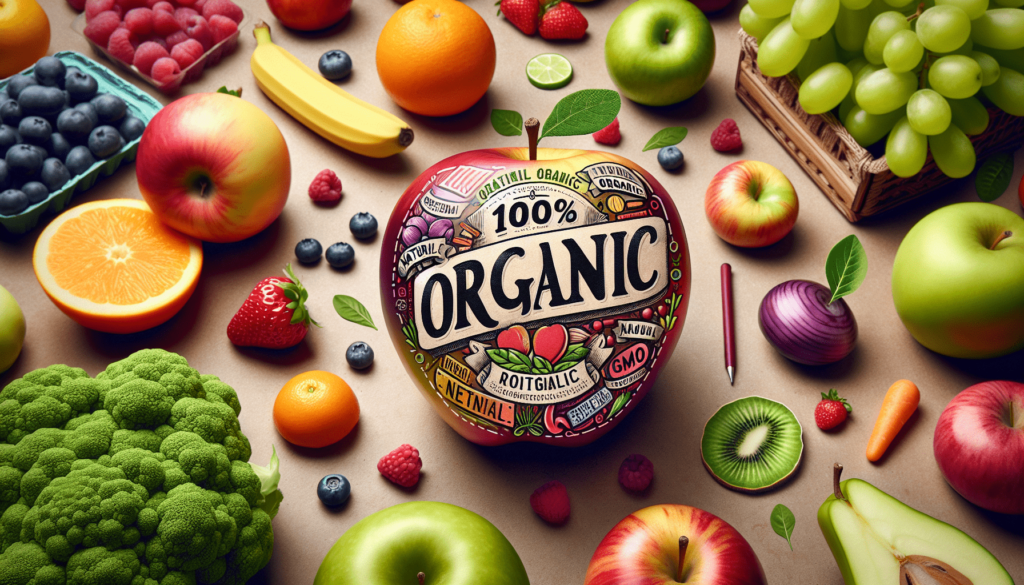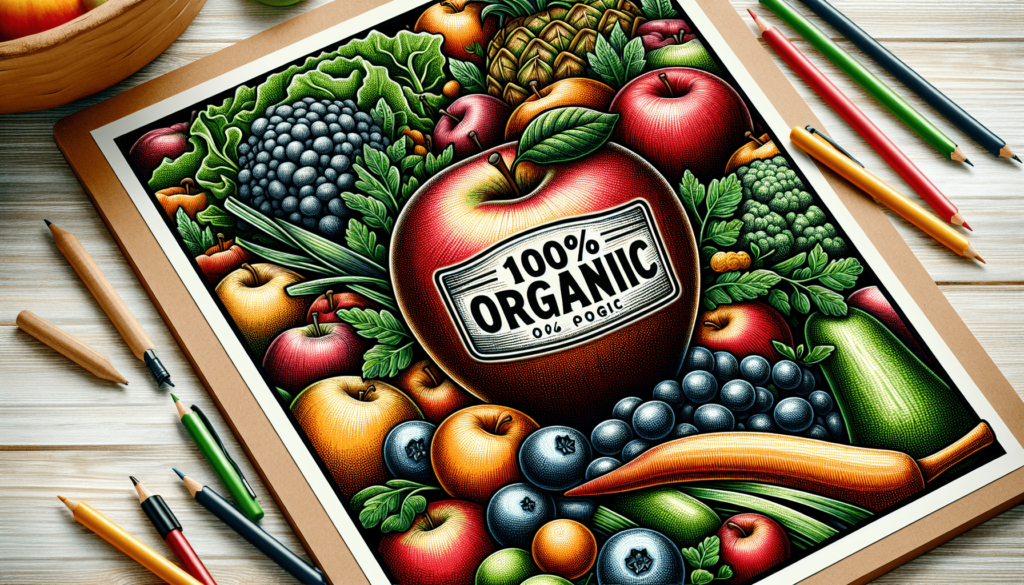Welcome to the ultimate guide for navigating through confusing food marketing terms! In this article, we will break down the definitions of commonly used terms such as “Natural,” “Organic,” and “Non-GMO.” By understanding the true meaning behind these labels, you will be able to make more informed decisions when shopping for groceries. So, let’s dive in and decode the mystery of food marketing terms together! Have you ever found yourself standing in the grocery store aisle, staring at a label on a product, trying to decipher what all those fancy terms like “natural,” “organic,” and “non-GMO” really mean? If so, you’re not alone. Food marketing terms can be confusing and misleading, making it challenging to make informed decisions about the food you eat. In this article, we will help you decode these popular food marketing terms to empower you to make the best choices for you and your family.

Understanding “Natural” Foods
When you see the term “natural” on a food label, you might assume that it means the product is healthy and wholesome. However, the reality is a bit more complicated. “Natural” does not have a strict regulatory definition by the U.S. Food and Drug Administration (FDA), which means that manufacturers can use this term somewhat loosely. In general, “natural” foods are minimally processed and do not contain artificial ingredients or added colors, flavors, or synthetic substances.
So, when you see the word “natural” on a food label, it’s essential to take a closer look at the ingredient list to determine if the product aligns with your definition of natural. Look for whole food ingredients and avoid products with long lists of unrecognizable additives. Remember, just because a product is labeled as “natural” does not necessarily mean it is the healthiest choice.
Unveiling the Truth Behind “Organic” Foods
The term “organic” is another popular food marketing buzzword that you’ve probably seen on many products lining grocery store shelves. Organic foods are produced without the use of synthetic pesticides, fertilizers, hormones, or genetically modified organisms (GMOs). To be labeled as “organic,” a product must meet the strict standards set by the United States Department of Agriculture (USDA) and be certified by a USDA-accredited certifying agent.
When you purchase organic foods, you can feel confident that you are purchasing products grown or produced in a way that supports sustainability and reduces exposure to potentially harmful chemicals. Organic farming practices promote soil health, biodiversity, and animal welfare. By choosing organic foods, you are not only making a healthier choice for yourself but also supporting a more environmentally friendly food system.
Differentiating Between “100% Organic,” “Organic,” and “Made with Organic Ingredients”
When shopping for organic foods, you may come across different labels such as “100% organic,” “organic,” and “made with organic ingredients.” Understanding the difference between these terms can help you make more informed decisions about the products you purchase.
-
100% Organic: Products labeled as “100% organic” contain only organic ingredients and have been processed under organic standards. These products are the purest form of organic foods you can find and carry the USDA organic seal.
-
Organic: Products labeled as “organic” contain at least 95% organic ingredients, with the remaining 5% coming from approved non-organic ingredients. These products also meet USDA organic standards and are certified by a USDA-accredited certifying agent.
-
Made with Organic Ingredients: Products labeled as “made with organic ingredients” contain at least 70% organic ingredients. While these products do not carry the USDA organic seal, they still must meet organic standards and be certified by a USDA-accredited certifying agent.
By understanding the differences between these organic labels, you can choose products that align with your preferences and values.
Deciphering the “Non-GMO” Label
“GMO” stands for genetically modified organism, referring to plants, animals, or microorganisms whose genetic material has been altered using genetic engineering techniques. The “non-GMO” label has become increasingly popular as consumers seek to avoid genetically engineered foods. When a product is labeled as “non-GMO,” it means that it does not contain genetically modified ingredients.
If you are concerned about the potential health and environmental impacts of GMOs, choosing non-GMO products can provide you with peace of mind. However, it’s essential to note that the term “non-GMO” is not regulated by the FDA or USDA in the same way that the term “organic” is. This means that while a product may be labeled as non-GMO, it may still contain other synthetic ingredients or pesticides.
When shopping for non-GMO products, look for the Non-GMO Project Verified seal, which indicates that the product has been independently verified by the Non-GMO Project, a nonprofit organization dedicated to providing consumers with transparent information about GMOs.
Tips for Navigating Food Marketing Terms
Navigating food marketing terms can be a daunting task, but with a few tips and tricks, you can become a more informed consumer and make healthier choices for you and your family. Here are some tips for decoding food labels and understanding what you’re really getting in each product:
-
Read Ingredient Lists: The best way to know what’s in a product is to read the ingredient list. Ingredients are listed in descending order by weight, so the first few ingredients are the most prominent. Look for whole, recognizable ingredients and avoid products with long lists of artificial additives.
-
Look for Third-Party Certifications: Third-party certifications like the USDA organic seal and the Non-GMO Project Verified seal provide an extra layer of assurance that a product meets specific standards. When in doubt, look for these certifications on food packaging.
-
Do Your Research: Educate yourself about different food marketing terms and what they mean. The more you know, the better equipped you’ll be to make informed decisions about the products you purchase.
-
Shop the Perimeter: As a general rule, the perimeter of the grocery store contains fresh, whole foods like fruits, vegetables, meats, and dairy products. These foods are often the healthiest choices and are less likely to contain misleading food marketing terms.
By following these tips, you can navigate the complex world of food marketing terms with confidence and make choices that align with your values and preferences.

Conclusion
Decoding food marketing terms like “natural,” “organic,” and “non-GMO” can be confusing, but with a little knowledge and awareness, you can make more informed choices about the food you eat. Remember to read ingredient lists, look for third-party certifications, and do your research to ensure that the products you purchase meet your standards for health, sustainability, and transparency. By empowering yourself with information, you can become a savvier consumer and advocate for a food system that values integrity and honesty. Next time you’re at the grocery store, you’ll be able to navigate the aisles with confidence, knowing that you have the tools to decode food marketing terms and make the best choices for you and your family.

